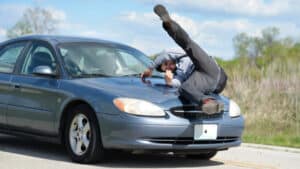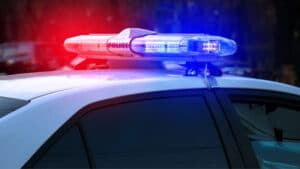Written by Christopher B. Dolan
This week’s question comes from Kevin in San Francisco: I live in the City and like many people, I do not own a car. Too expensive. I tend to walk often and enjoy it. Can you talk more about pedestrian law and pedestrian safety. Seems like every day I have to make sure I do not get sidelined by an electric bike or scooter. Even when I cross the street on a crosswalk, and I have the green light, cyclists and scooter riders just speed towards me. What are my rights? Don’t I have the right of way?
Kevin, thank you for writing us. You are right to feel concerned about the risks to your safety as a pedestrian in San Francisco. Traveling as a pedestrian has become increasingly risky in the past decade. According the National Highway Traffic Safety Administration pedestrian fatalities have increased by 46% from 2010 to 2019.
San Francisco is more densely populated than most major U.S. cities, and has some of the highest levels of traffic in the world. On top of that, millions of people visit San Francisco every year. In a city like San Francisco, the danger to pedestrians seems to be an accepted fact of life, as it is in other major cities, yet drivers still are liable for the injuries they cause to pedestrians when they hit someone due to speeding, inattention or distraction, impaired driving, or some other factor.
In such a dense city the risks are high when traveling as a pedestrian. A moving bicycle, scooter or motor vehicle can cause catastrophic injuries and death when they collide with a pedestrian. From 2016 to 2020 there were over 4,000 pedestrian crashes in the San Francisco Area, with nearly 80 pedestrians killed and thousands more injured.
Pedestrian crashes are much more likely to occur in inner-city neighborhoods, the Tenderloin, SOMA, Mission, and Downtown specifically. However, on a per crossing basis, individual pedestrians are at a higher risk of being struck by vehicles in the less dense, more residential areas, meaning anywhere in San Francisco there are risks of being injured as a pedestrian.
Pedestrian crashes are often caused by negligence on part of a driver. Most pedestrian injuries and deaths occur at nighttime and drivers impaired by drugs and alcohol raises the risk of pedestrians being hit by a driver’s negligence. It is important to always assume a driver does not see you, and stay out of the way of any moving bicycles, scooters or motor vehicles.
Another major cause of pedestrian injuries is speeding vehicles. Speeding vehicles increase the likelihood of injury and increase the severity of the injury. The body is a fragile thing and you should always be cautious when approaching a roadway as a speeding vehicle can come out of no-where and cause devastation.
With chaotic streets, bustling traffic, and a growing population of bicycle and scooter riders, what are a pedestrians rights and how do they protect pedestrians?
CVC § 21950 is the primary Right-of-Way law in California which states that,
“The driver of a vehicle shall yield the right-of-way to a pedestrian crossing the roadway within any marked crosswalk or within any unmarked crosswalk at an intersection.”
This law requires drivers to slow down and exercise due caution to keep pedestrians safe.
Unfortunately, the law is not completely straightforward, and CVC § 21950 also states,
“No pedestrian may suddenly leave a curb or other place of safety and walk or run into the path of a vehicle that is so close as to constitute an immediate hazard.”
Drivers have further duties under CVC § 22350 which is commonly known as the “basic speed law.” This section prohibits those driving motor vehicles from driving faster than what is reasonable in a given circumstance. Under California’s basic speed law a driver must drive at a safe speed that does not endanger the safety of pedestrians.
Pedestrians do not always have the right of way, and in cities like San Francisco the law sets forth specific guidelines for when a pedestrian has the right of way or not. Even though pedestrians do not always have the right-of-way, if a pedestrian violates their duties it does not mean a motorist or bicyclist is free to hit them without liability for the injuries.
Just because a pedestrian has the right-of-way does not protect them from being injured. Drivers failing to yield to pedestrians with the right-of-way was the primary cause for more than 42 percent of pedestrian collisions from 2016 to 2020. The law will not protect you from injury from those who do not follow it. The law will only provide you with an avenue to get compensated for your injuries.
No amount of compensation following a catastrophic injury or death will truly pay for the damage of a pedestrian accident. As a pedestrian you should keep yourself as safe as possible when traveling around the streets. You should do the following as a pedestrian to reduce your risk of injury or death:
-
Wear visible clothes, especially at night time. If it is dark bring a flashlight and reflective clothing.
-
Use crosswalks to cross streets, but do not put your trust in having a green light. ALWAYS check for oncoming motorists, bicyclists and other riders before you cross the street.
-
Do not walk in bike lanes. Always use the sidewalks and stay away from the roadway and bike lanes.
-
Stay aware of your surroundings when traveling. This means avoiding noise canceling ear buds and other distractions.
Your safety should be your primary concern when traveling on foot. Even the sidewalks can pose risks to pedestrians. Watch out for holes, cracks and unkept walkways.
If you are ever injured in San Francisco you should contact an experienced personal injury attorney who is knowledgeable about pedestrian laws and will fight to recover compensation from those responsible.
Be safe out there Kevin, thank you for voicing your concerns.










